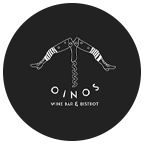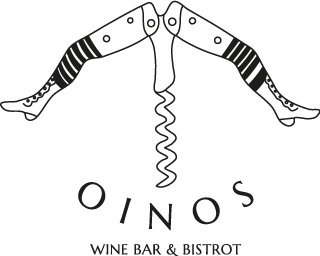Brunch is not just a word that consists of breakfast and lunch. It is also just that in its execution – a popular tradition of togetherness.
Source
Guy Beringer first used the word brunch in an article in Hunter’s Weekly in 1890. In it he advocated a lighter meal late on a Sunday morning to replace the heavy, hearty midday meal after Sunday worship. He called it brunch – breakfast and lunch, two meals together.
Dissemination and benefits
In the 1920s in the United States, brunch was a luxury consumed in hotels by the rich and the stars and starlets. But it did not remain isolated from other social classes for long. From the 1930s onwards, the middle class adopted brunch as a cost-effective 2-in-1 meal prepared at home. A decade later, brunch became so popular that the first brunch cookbook was published. After World War II, its popularity waned and people from all walks of life enjoyed the chance to sleep in on Sundays and enjoy a social, casual meal that stretched well into the afternoon. Moreover, by the war at the latest, most women had gone to work and Sunday was the only day of the week when the whole family could sit together. It was also then that it became customary to serve not only home-cooked food, but also bought food and ready-made products.
Shared meals at Sunday brunch
From the 1960s onwards, less and less emphasis was placed on what was eaten. The rule was that everyone could prepare and serve what they wanted. The most important thing was togetherness, atmosphere, togetherness and intimacy. Sunday brunch became so popular in the United States in the 1980s that restaurants and hotels began offering it on Saturdays. By the late 1990s and early 2000s at the latest, the brunch tradition had spread to the rest of the world.
Today, brunch is known everywhere as a popular and enjoyable alternative to the traditional meal. You can eat what you want, where you want, when you want. It’s the time spent together, the enjoyment and the informality that makes brunch so appealing.
Preparation
Depending on the time of year, the number of people and the cooking skills of the host, the preparations for a successful brunch can look different. The event is usually preceded by an invitation. Plans are made about where to sit, how many seats are needed and how to set the table.
The most important preparation and planning, of course, surrounds the food. You need to think about what and how much you want to offer, what suits the time of year, and what allergens, intolerances or guests’ diets need to be taken into account. Nowadays, vegan, vegetarian, gluten-free and lactose-free food and drinks are no longer a barrier.
Procedure
Brunch is usually held on a Sunday or a public holiday and traditionally runs from 11am to 3 or 4pm. However, the schedule and times have changed over the decades, so everyone can hold it when it suits them best. Most restaurants, cafés and hotels offer brunch at specific times. But for those who eat breakfast at home, there are no rules. The very name brunch suggests that the meal should combine lunch and breakfast. So the meal must start in the late morning or early morning.
Take your time and have fun
Often this meal starts when all the guests have arrived or have started to eat, and everyone joins in when they arrive on time. There is toasting, eating, drinking, lots of talking and laughing. The meal drags on. It is important to spend a lot of time together, enjoying and feasting on the food. This includes sitting in a relaxed atmosphere, occasionally turning to another conversation partner, standing up in between, perhaps picking up a card game or singing a little song.
What belongs on the brunch table?
As far as food and drink is concerned, the following applies: hot and cold, sweet and savoury, light and hearty – just the ingredients for breakfast and lunch.
Brunch classics are egg dishes such as fried eggs or scrambled eggs; bread in all colours and shapes; hot dishes such as soups and stews; cold meats such as roast beef and fish. Those who like to cook for themselves and try something new will be in their element and can let off steam. But store-bought and prepared meals are also popular and just as delicious.
Appropriate drinks
Drinks are not to be missed either. If you eat a lot and for a long time, you drink a lot. People usually start the morning with a hot wake-up drink, a cup of aromatic coffee or a strong black tea. People also like to toast with a glass of champagne. The longer the meal drags on, the more important it becomes to have a small choice of drink – juice, mimosa, punch or hot chocolate (with or without topping). The same applies to drinks as to food – they should be enjoyed.
Ideas for food and drinks
Cakes
- Bread and rolls
- Croissants
- Cinnamon rolls
Spreads and toppings
- Sausage, ham and cheese
- Butter
- Tomato sauce
Hot dishes
- Scrambled eggs, fried eggs, frittata, quiche
- Bacon
- Baked potatoes
- Soups
Meat and fish
- Marinated or smoked salmon
- Roasted beef
Sweets
- Cakes, brownies, muffins
- Tiramisu
- waffles
- fruit salad
Drinks
- Coffee and tea
- juices
- Punch, bolé
- Hot chocolate
- Mimosas, champagne, Bloody Marys
________________________________________
Questions and answers about brunch
When is the right time for brunch?
Brunch traditionally starts at 11am and runs until mid-afternoon. However, nowadays the time is no longer important. Most of the time, caterers choose a time between breakfast and lunch. It is best to check which time best suits your guests and how much time you need to prepare that morning.
What goes with brunch?
- a large table
- enough chairs
- a small decoration
- dishes and cutlery
- enough bowls, plates and baskets to serve the food
- if necessary, a list of allergens, intolerances and special diets
- sufficient food and drink
- the right atmosphere: a brunch is only as good as the atmosphere in the room; the more chatty, the better.
What do you eat at brunch?
Brunch is a hot and cold meal. These are typically the dishes you know from breakfast and lunch – bread and pastries, spreads, fruit salad, hot soups and stews, cold meats and fish, and desserts. Of course, hot and cold drinks are also available. Coffee, tea, orange juice, champagne or mimosas are often on the list of favourites. The perfect blend of sweet and savoury, light and sumptuous, hot and cold, makes brunch the highlight.


